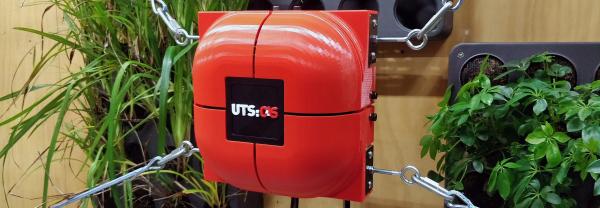Whilst the social and ecological benefits of green walls are well known, uptake has been slow partly due to perceptions of high ongoing maintenance costs. The development of a prototype wallbot to inspect and monitor high-rise green walls attempts to address this barrier.
Project summary
With urban temperatures rising due to urban densification and climate change, green walls can help by reducing heat build-up. They also have social, environmental and economic benefits by improving amenity and providing habitat. Green walls – sometimes also called living walls, green facades, bio-walls or vertical gardens – refer to plants grown directly on a building's façade, or on a separate structural system, which can be free-standing or attached to the facade. Alternatively, vegetation may be grown in planter boxes and trained on a trellis with mechanised watering.
The benefits of green walls include:
- absorb carbon dioxide
- reduce the urban heat island effect, where inner-city areas experience higher temperatures than surrounding areas
- increase the thermal performance of buildings, and lower energy costs
- control stormwater and improve water-sensitive urban design, with rainwater being absorbed and run-off into drains slowed
- improve air quality
- reduce noise pollution
- increase urban biodiversity and potential for food production
- improve health and well-being
- assist with greywater recycling
- aesthetic beauty
Despite these benefits, significant barriers to adopting green walls remain. Chief among these is cost. The maintenance of green walls, especially at elevated heights also presents health and safety risks with workers needing to operate at height using scissor lifts or gondolas, or having to abseil. To address this, UTS researchers have designed a small robot called Wallbot able to ‘crawl’ across the vertical vegetation. The Wallbot can be fitted with various tools and cameras used for monitoring and maintaining the plants and supporting infrastructure. A prototype has already been developed and field tests are due to be undertaken on different wall structures at UTS in 2022 and 2023.
Wallbot has the potential to reduce the costs and safety risks associated with maintaining green walls, especially in high and hard to reach locations. Easier and cheaper green wall maintenance will help achieve more liveable cities, with healthier ecosystems.
See the Project video here
Project timeframe
The Wallbot project was funded by the City of Sydney Environmental Performance grant in 2019 and 2020.
SDG targets addressed by this project
Industry, Innovation & Infrastructure:
9.4 - By 2030, upgrade infrastructure and retrofit industries to make them sustainable, with increased resource-use efficiency and greater adoption of clean and environmentally sound technologies and industrial processes, with all countries taking action in accordance with their respective capabilities.
-
Professor, School of Built Environment
-
Senior Lecturer, School of Mechanical and Mechatronic Engineering
-
Key collaborators
- Callum McMaugh, UTS
- Richardo Khonasty, UTS
- Associate Professor Tim Schork, UTS
- Jock Gammon, Junglefly
- City of Sydney




